One of the best features is that customizing TemplateToaster’s theme is extremely easy, even after installation. You can find an additional tool on the sidebar of the admin dashboard, under the name “Theme Options”. These theme options give you the flexibility to change some elements of your theme. Let us have a look at these theme options.
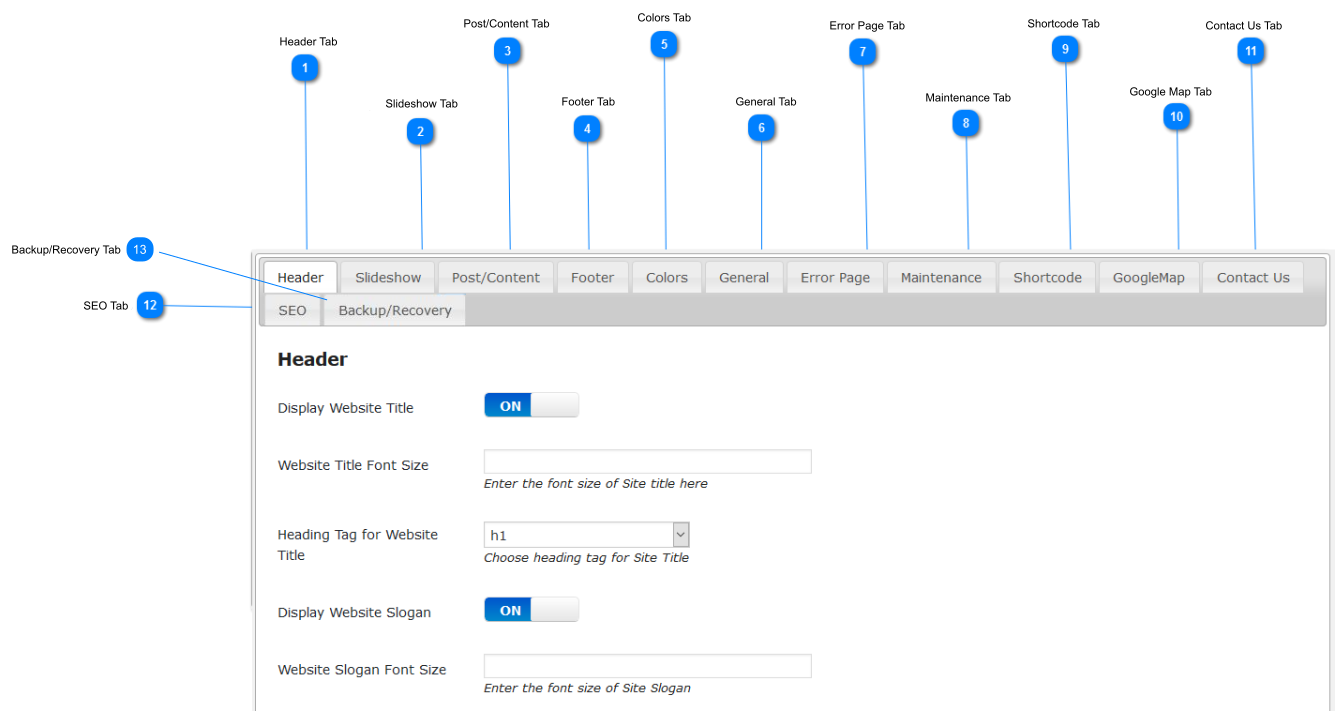
1 Header Tab
This tab allows you to customize your site logo, site slogan, social media icons, even after export. You can show/hide a logo or icons. It also allows you to set a new logo image or social media icons. Moreover, you can even change the height, width or link to all these images.
2 Slideshow Tab
![]()
This tab shows you various options of Slideshow for your theme. It allows you to replace the images used in the slideshow by uploading new ones. And the best part is that you can do it even after installing the theme.
3 Post/ Content Tab
![]()
This tab consists of the options for customizing the post settings.

Number of Featured Posts –
You can mention the number of featured posts to display on the home page of the site.
Number of Columns –
You can specify in how many columns to show the featured posts.
Show Breadcrumb on the Page –
Breadcrumbs is basically the type of text-based website navigation that breaks the site into links of categories and sub categories. Breadcrumbs makes site navigation easier while allowing major categories of information to be linked in a sequential order. So the breadcrumb navigation is displayed to the user. This makes it easier for the users to easily navigate between the pages.
Select the “ON” option, if you want to display the Breadcrumbs. Otherwise select “OFF” option to hide the Breadcrumbs.
Show Breadcrumb on the Post –
You can show/hide the breadcrumb on the post as well. Simply select this option.
Breadcrumb Prefix –
Set a breadcrumb prefix using this option.
Breadcrumb Separator –
You can set a desired separator on the breadcrumb using this option.
4 Footer Tab
![]()
It includes following options to customize the Footer:
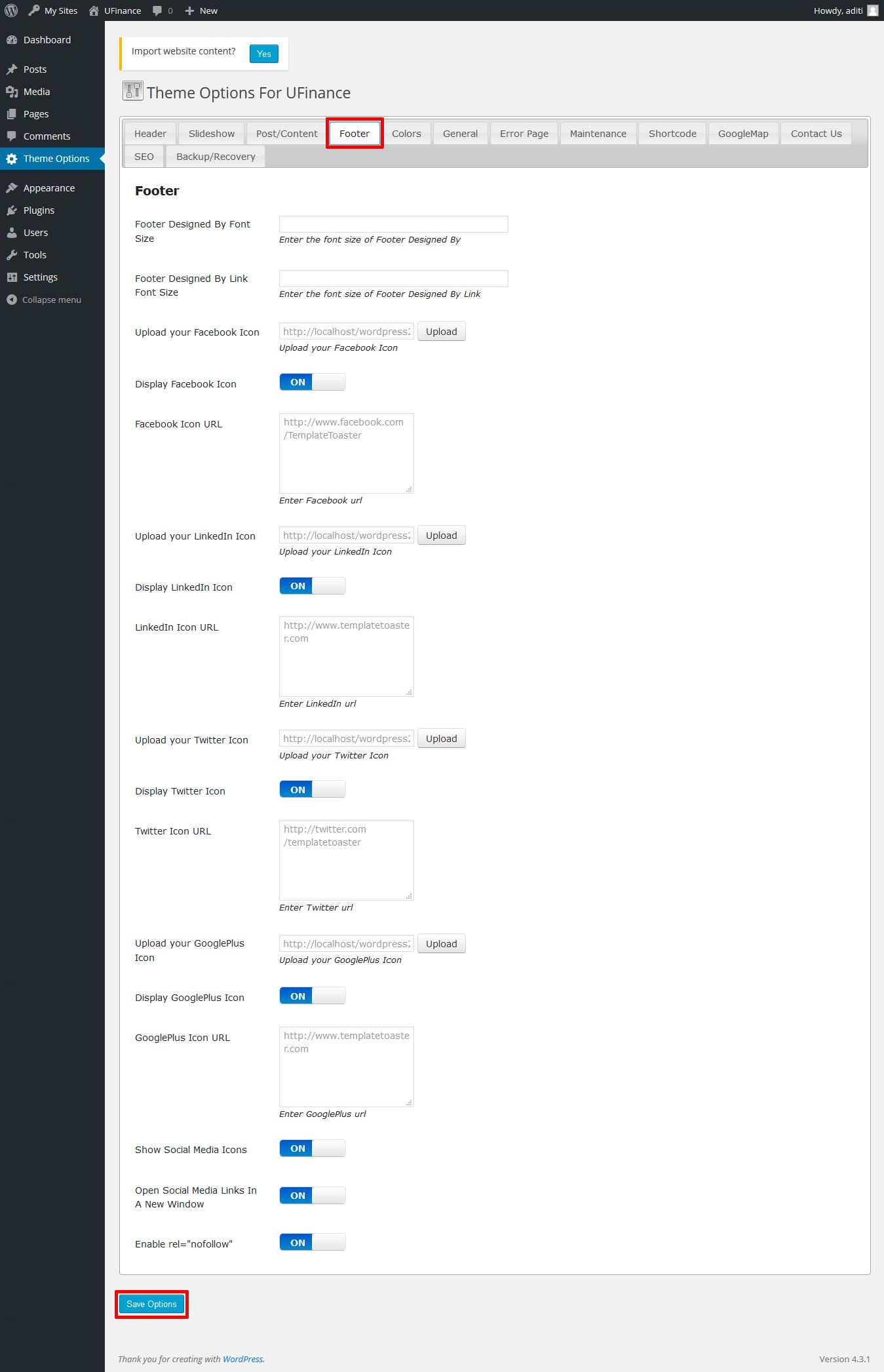
Footer Copyright Text –
Use this to add/edit Copyright Text in the footer.
Footer Copyright URL –
Place the relevant copyright URL on Copyright Text in the footer.
Display Footer Copyright –
Select ‘On’ to display the Copyright Text in the footer. Otherwise you can keep it ‘Off’ to hide.
Footer Copyright Font Size –
Enter the required font size for the Footer Copyright Text.
Footer Designed by Font Size –
Enter the required font size for Designed by element in the footer.
Footer Designed by Link Font Size –
Enter the required font size for Designed by Link Text.
Facebook Account Configuration-
You can upload a custom Facebook Icon and link it with your Facebook account. If you don’t want to display Facebook Icon in the footer, you can turn it OFF and vice -versa.
LinkedIn Account Configuration-
You can upload your desired custom LinkedIn icon in the footer. Then, specify the URL of the LinkedIn account to link with the icon. If you don’t want to display the Icon in the footer, you can turn it OFF and vice -versa.
Twitter Account Configuration-
You can upload a custom Twitter Icon and link it with your Twitter account. If you don’t want to display Twitter Icon in the footer, you can turn it OFF and vice -versa.
Google + Account Configuration –
You can upload a custom Google+ Icon and link it with your Google+ account. If you don’t want to display Google+ Icon in the footer, you can turn it OFF and vice -versa.
5 Colors
![]()
You can change the colors of some elements of the website, which are shown below:
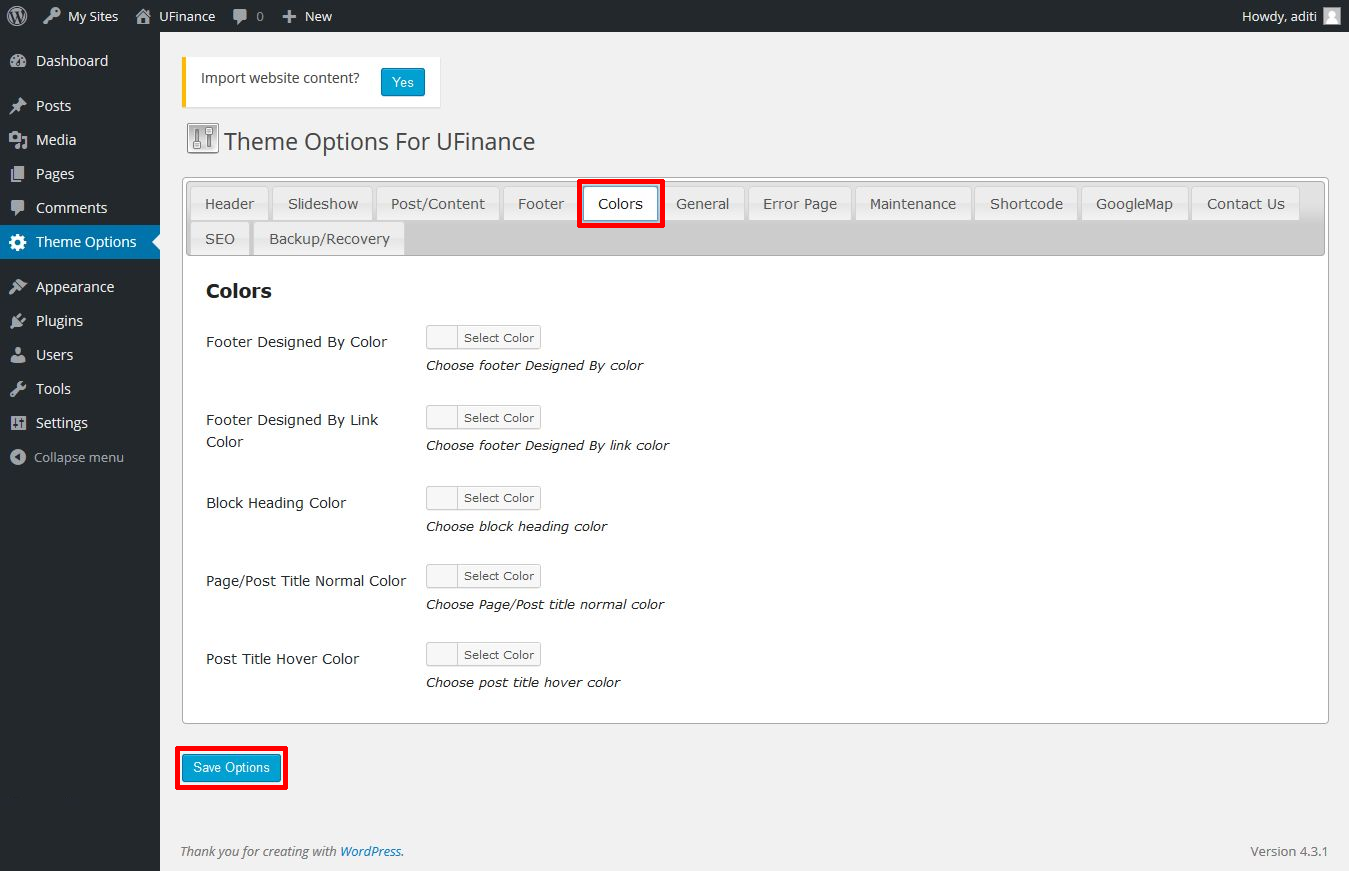
6 General Tab
![]()
This tab offers you the options for general elements on your website. Use this tab, if you want to enable/disable elements like, Google Analytics, Page Title, Post Title, Navigation, Next/Previous link, Comment display, Avatar, Back To Top Button etc.
7 Error Page Tab
![]()
This tab gives you the options for configuring error page settings like, redirect to home page if Error page occurs, displaying error message, and image, etc.
8 Maintenance Tab
![]()
You can make use of this tab if your website is going in maintenance mode. You can write the title and content for the maintenance mode page. And apply an image in the background, using the options available.
9 Shortcode Tab
![]()
In this tab, most of the commonly used shortcodes are available. From this tab, you can get the shortcodes for Google Docs Viewer, Google Map, Related Posts, Google AdSense, Google Chart, Tweet Me Button, YouTube, Private Content, PayPal, Login Form, Custom Menu, Archives, Contact Us Form, Calendar, Categories, Links, Meta, Pages, Recent Comments, Recent Posts, RSS, Search, Tag Cloud and Text.
10 Google Map
![]()
This tab has the option that lets you add Google Maps on your website. You need to simply provide few details.
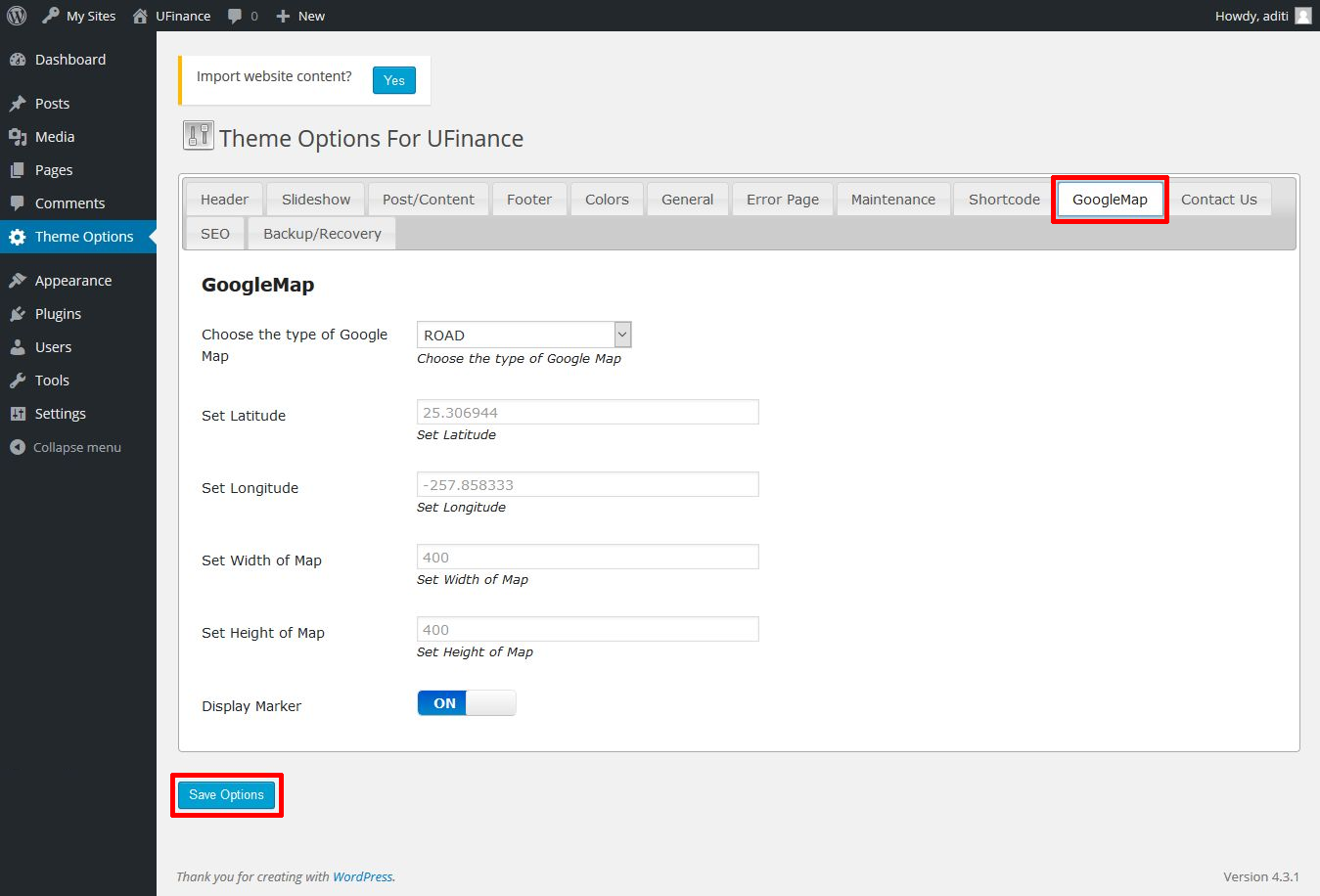
11 Contact us Tab
![]()
This tab lets you customize the contact form. You can specify Public and Private key for Google Captcha, customize Error/ Success message and can also add more fields in the form as needed.
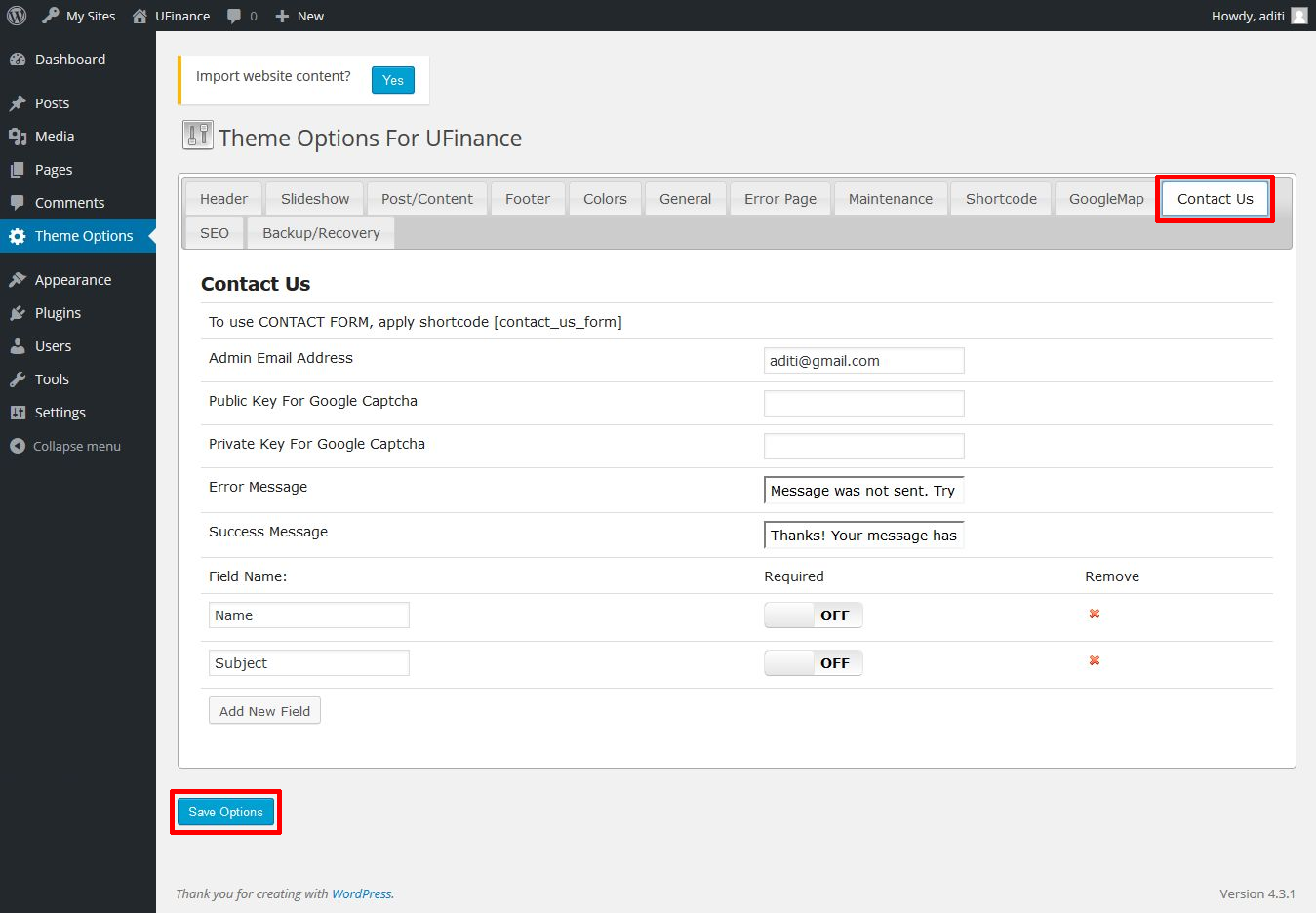
12 SEO Tab
![]()
This tab has some important SEO options for your website, which are divided into sub-tabs.
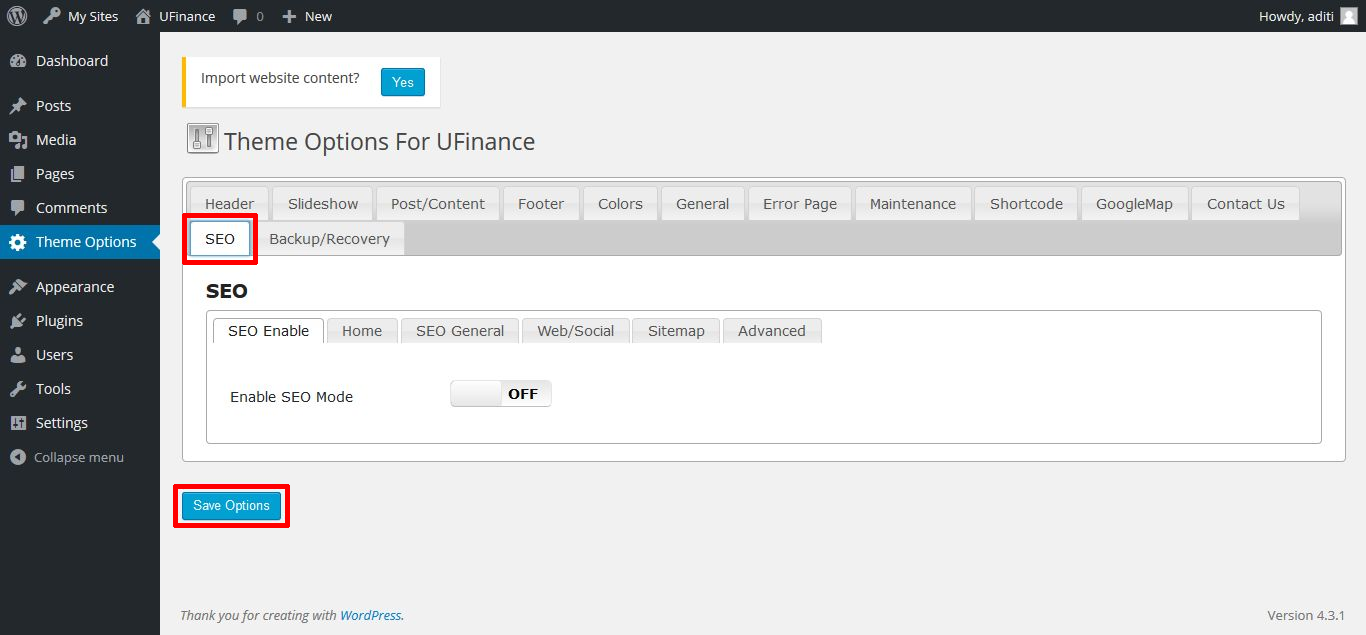
SEO Enable –
It is up to you whether you want to enable the SEO mode or not. You can choose to enable or disable this option.
Home –
From the home sub-tab, you can specify the Title, Meta Description and Keywords of the Homepage. Besides this, you can also select the Title formats of Page, Post, Category, Date Archive, Author Archive, Tag, Search and 404.
SEO General –
This sub-tab has options to ON (enable)/ OFF ( disable) general SEO features, such as use of Meta Keywords, use of categories as keywords, use of tags as keywords, auto generate descriptions, set No-Index for all pages, set No-Index for all posts and set No-Follow for all pages.
Web/Social –
Through this sub-tab, you can verify your website with Google Webmaster Tool, Bing Webmaster Tool and Pinterest Webmaster Tool. And, you can also provide default Google Plus profile, which is required for Google Analytics.
Sitemap –
You can see the sitemap of your website from this tab. Also, you can decide whether you want to include Page Type and Post type in the sitemap or not.
Advanced –
This sub-tab gives you the advanced SEO options. Those options allow you to turn ON/OFF the use of No-Index/ No-Follow for different archives, like Date Archive, Author Archive, Tag Archive, Category Archive, Search Archive. And, you can also define additional Post and Page headers.
13 Backup/ Recovery Tab
![]()
Backup and Recovery is an important feature of TemplateToaster. You need to give the FTP information and an Email address for backup storage and to create an automatic backup schedule. The backup of your website will be created automatically according the schedule you’ve made. You can choose automatic backup interval according to your preference, which could be as short as 10 minutes or as long as a week. Moreover, you can also choose the files to include in the backup and the ones to exclude. Similarly, while restoring the backup, you can select the type of files to restore and the ones to refrain from restoring.






